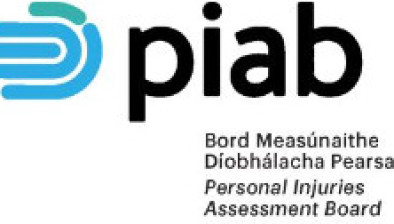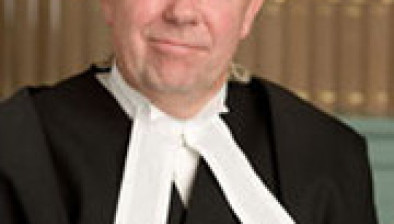High Court: Personal injuries claim not statute-barred following supplemental application to PIAB to join a defendant

Killian Flood BL
The High Court has allowed an appeal against a Circuit Court ruling that a personal injuries claim was statute-barred against a set of defendants.

About this case:
- Citation:[2021] IEHC 431
- Judgment:
- Court:High Court
- Judge:Ms Justice Nuala Butler
The principal issue in the case was whether the plaintiff’s application under section 46(3) of the Personal Injuries Assessment Board Act 2003 to add an additional defendant to a PIAB application affected the period in which the Statute of Limitations 1957 was paused.
The defendants had argued that the plaintiff had brought a supplemental application to PIAB more than six months after a previous authorisation had issued. Accordingly, it was stated that legal proceedings had issued out of time against both defendants.
However, the High Court rejected this submission, holding that there was no limitation on a plaintiff bringing a supplemental application against another defendant after the six-month period had expired.
Background
The plaintiff had been in a car accident and initially issued a PIAB application against the second defendant, Mr Frank Kearns, the owner of the car. The accident occurred in February 2014. A PIAB application was brought in April 2015 against Mr Kearns and in October 2015, an authorisation issued for legal proceedings to commence.
However, the plaintiff had failed to issue proceedings against the driver of the car, Ms Caroline Kearns. Accordingly, a supplemental application seeking to join Ms Kearns as a respondent was lodged with PIAB in September 2016. In October 2016, a further PIAB authorisation issued against Ms Kearns. Proceedings were subsequently issued by the plaintiff against both defendants in March 2017.
The defendants brought a motion arguing that the plaintiff’s claims were statute-barred. It was noted that section 50 of the PIAB Act “stopped the clock” while a PIAB application was processed, with a further six-months’ grace provided to a plaintiff against the statute after an authorisation issued.
Accordingly, it was claimed that the proceedings should have been brought against Mr Kearns on or before February 2017. The plaintiff accepted that, if there was no issue with joining Ms Kearns as a defendant, then the claim against Mr Kearns would be statute-barred. However, it was claimed that the supplemental application to join Ms Kearns under section 46(3) extended the grace period to bring the proceedings and stopped the limitation period from running.
For their part, the defendants argued that the supplemental application had been made after the six months’ grace period of the first authorisation had lapsed. It was therefore claimed that the plaintiff was not entitled to rely on the subsequent grace period from the second authorisation. Effectively, it was argued that despite the two-step approach to the PIAB application, there was only one application which was considered by PIAB. As such, it was argued that the plaintiff could not “reinvigorate” the first authorisation.
The Circuit Court determined that the proceedings were statute-barred and duly struck them out. The plaintiff appealed the decision to the High Court.
High Court
Delivering judgment in the case, Ms Justice Nuala Butler stated that the matters raised a complex legal question as to the running of time under the PIAB Act 2003. Further, it was noted that the amending legislation under the PIAB (Amendment) Act 2019 did not apply in the case, although that legislation had the effect of creating different time limits depending on whether a defendant was named in an original application.
The court began by outlining the relevant legislative provisions of the PIAB Act. It was held that section 50 had the practical effect of extending the limitation period while a PIAB application was ongoing. The limitation period was suspended during a PIAB application and for six months after an authorisation issued.
The court also considered the provisions of section 46(3) of the Act, which allowed for a claimant to join a further respondent to a PIAB application where there was a genuine oversight or ignorance of omitting that person from the application.
Further, the court considered the two leading judgments on the application of section 46(3), which were Renehan v. T & S Taverns Ltd [2015] 3 IR 149 and Du Plooy v. Sport Ireland [2020] IEHC 669.
Applying these cases to the facts, the court held that the fact that the plaintiff knew of Ms Kearn’s involvement in the accident from an early point had no bearing on the validity of the supplemental application. There was no legislative basis to suggest that a section 46(3) application should be a merits-based application.
Further, it was held that if the defendants wished to argue against the validity of the second authorisation, then the appropriate course of action was to take judicial review proceedings. This did not occur in the case and as such the second authorisation was presumed valid.
Next, the court stated: “Insofar as the defendant contends for some limitation on the entitlement of the plaintiff to make an application under s. 46(3) by reference to the expiration of the disregarded six-month period following the issuing of the first authorisation, I cannot find any basis for this in either s. 50 or s. 46(3).” There were simply no rules under the legislation regarding the timing of a supplemental application under the PIAB Act. Once the time limit was still running against Mr Kearns, the section 46(3) application could be brought.
The court also rejected the proposition that a section 46(3) application had to occur prior to the expiry of the six-month suspended period following an authorisation. It therefore followed that the proceedings against Ms Kearns were not statute-barred. It was noted that the Renehan judgment showed that the validity of proceedings for a subsequent defendant was not dependent on whether proceedings had been brought in time against the original defendant.
Finally, the court held that there was considerable force in the argument that proceedings could be validly served on Mr Kearns during the suspended period of the second authorisation. The plaintiff’s application was a single application to PIAB and the second authorisation was made under the existing claim. As such, the second authorisation was not a separate application, which might have caused issues with the Statute. Under Renehan, the Supreme Court had determined that the “end point” of the suspended period was six-months after the section 46(3) application. Accordingly, the proceedings against Mr Kearns were also issued within time because they had before the end of the suspended period following the second authorisation.
Conclusion
The court allowed the appeal and set aside the Circuit Court order.










